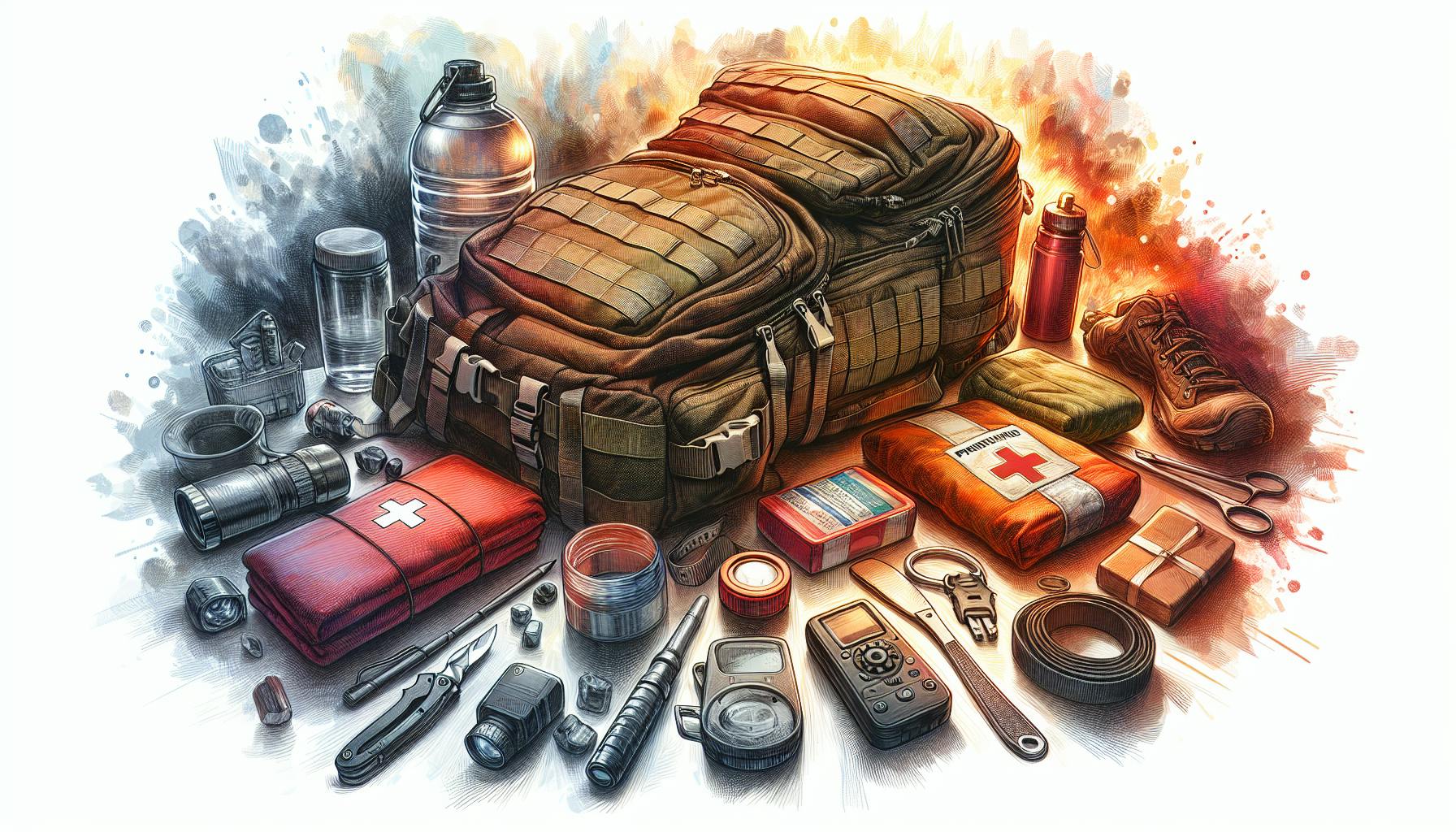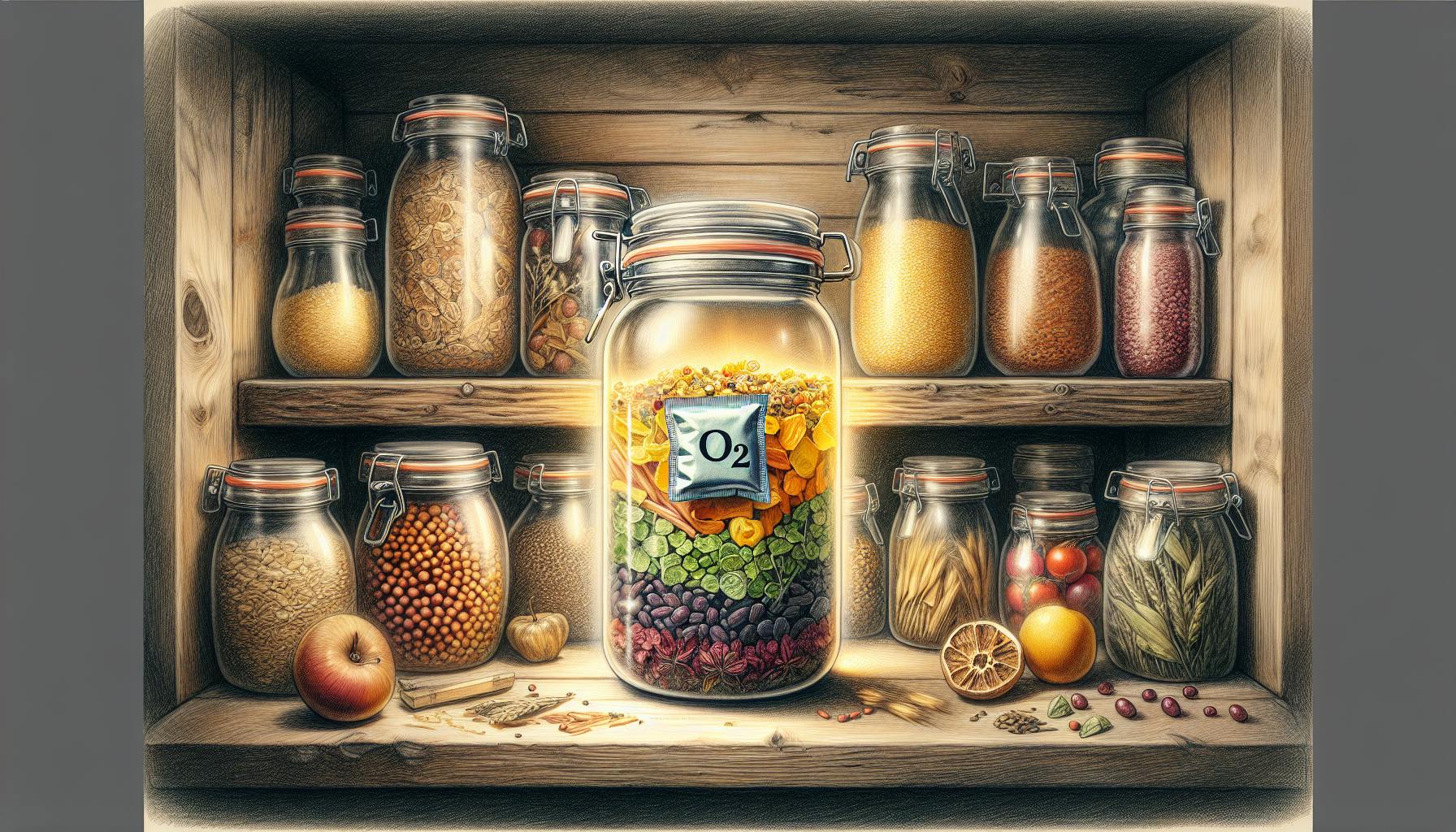Introduction to Building a Basic Prepper Food Supply
As recent events have shown, emergencies can strike when we least expect them. Having a robust food supply is critical to ensure your family is nourished and cared for during crises. A well-stocked pantry provides peace of mind knowing you have reserves to rely on if stores run bare. This article will outline the essential items every prepper's food stash should contain. We'll also share tips for building your inventory affordably over time.
When curating your prepper food supply, it's important to think about complete nutrition. Look for shelf-stable ingredients that provide protein, whole grains, fruits, vegetables, healthy fats, vitamins and minerals. Variety and versatility are also key - stock up on foods and seasonings that allow for diverse meal preparation. Consider the dietary needs, restrictions and preferences in your household too.
Take inventory of your current kitchen pantry and make note of any existing emergency food purchases. Look for gaps in nutrition or variety that need to be filled in. Check expiration dates and factor the shelf life of ingredients into your planning.
Assessing Your Existing Food Stores
Before making new prepper food purchases, take stock of what you already have on hand. Thoroughly inventory your kitchen pantry, cupboards, refrigerator and freezer. Make note of all ingredients and food items currently available, even if not specifically bought for emergencies. These could include canned goods, boxed ingredients, frozen foods, snacks, etc.
It's helpful to organize your inventory into categories like proteins, grains, canned goods, baking essentials, oils and fats, snacks, etc. You can use a spreadsheet, notebook, or mobile app to track everything in an organized way. Note key details like expiration dates, number of servings, and any storage instructions.
Next, audit any survival supplies you’ve already set aside. List out the food staples, MREs, freeze-dried meals, and other items purchased specifically for emergency preparedness. Identify any noticeable gaps - are you short on proteins, fruits or veggies? Is there a lack of variety and versatility? Use this assessment to determine what you should prioritize buying next.
Also look at expiration and best by dates. Incorporate soon to expire items into meals now so they don’t go to waste. Factor the shelf life of existing reserves into your purchasing plan. For example, buy more meat and produce if your current supply is mostly long-term staples.
Finally, think about your household’s dietary considerations. Focus on ingredients for specialized needs like food allergies, intolerances, diabetes, etc. Ensure your supply has versatility to accommodate different tastes and nutrition requirements.
Key Macronutrients to Stock Up On
When building your prepper pantry, be sure to have adequate sources of the key macronutrients - protein, carbohydrates, fats, and fiber. Stock up on a variety of ingredients from each category. Here are some of the must-haves:
Proteins: Canned tuna, salmon, chicken, turkey (get ones packed in water for lower sodium), ham, corned beef, chili with meat, peanut butter, almond butter, nuts like almonds and walnuts, pumpkin and sunflower seeds
Whole Grains: Brown rice, quinoa, old fashioned oats, whole wheat pasta, amaranth, teff, popcorn, whole grain crackers, pancake mix, whole wheat flour
Fruits & Vegetables: Canned tomatoes, pumpkin, carrots, green beans, spinach, beets, mandarin oranges, pineapple, applesauce
Healthy Fats: Olive oil, coconut oil, avocado oil, walnut oil, nut butters, chia seeds, flax seeds
Sugar/Carbs: Honey, maple syrup, dates, white/brown sugar, rice cakes, nut granola bars
Dairy: Powdered milk, shelf-stable UHT milk, evaporated milk
When sourcing these ingredients look for lower sodium, no sugar added, or reduced sugar options when possible. Compare brands and generics to find the best deals. Refrigerate oils and nut butters after opening.
Essential Flavor Boosters and Cooking Staples
In addition to macronutrients, stock up on these flavor boosters and cooking basics:
- Herbs, spices, seasoning blends, hot sauce, mustard, ketchup, barbecue sauce
- Low sodium canned or powdered broths and soups
- Soy sauce, balsamic vinegar, wine vinegar, sauces, gravies, condiments
- Baking staples like yeast, baking soda and powder, baking mixes, vegetable oil, flour
- Natural sweeteners - honey, maple syrup, coconut sugar, stevia
- Shelf-stable milk, evaporated milk, powdered milk alternatives
- Comfort foods like coffee, tea, chocolate chips or dark chocolate
These items allow you to add flavor, texture, and variety to simple dishes. They turn boring ingredients into delicious, nourishing meals your family will look forward to eating. Take inventory before shopping and prioritize must-have items you’re missing.
Expanding Food Variety Over Time
The wider the variety of foods in your prepper pantry, the better. A diverse food storage helps prevent taste fatigue if relying on it long-term. Over time, gradually expand your reserves using these strategies:
- Grow fruits, vegetables and herbs at home for canning and preserving
- Forage for wild edibles like berries, mushrooms, and greens
- Learn techniques like water bath canning, dehydrating, and fermenting
- Make bulk purchases of sale items and build up inventory
- Connect with other local preppers to trade supplies and increase variety
- Add comfort foods like coffee, tea, chocolate, spices and condiments
Specializing in home food production and preservation takes your prepper pantries to the next level. Not only does it expand variety, but offers insurance against disruptions to the supply chain. Homegrown foods and foraged wild edibles connect you to sustainable nourishment.
Specialized Dietary Considerations
When stocking up, tailor your food reserves to your household’s particular dietary needs:
- Babies/Kids - Formula, pureed baby foods, pediatric electrolyte solution
- Allergies - Eliminate problem ingredients like dairy, gluten, etc.
- Diabetes - Low sugar grains, reduced sugar canned goods, stevia
- Gluten-Free - GF oats, grains, flours, bread mixes, crackers
- Vegetarian/Vegan - Beans, lentils, tofu, textured vegetable protein
- Keto/Low Carb - Nuts, oils, meats, low carb flours and veggies
- Autoimmune Conditions - Avoid ingredients like nightshades, eggs, etc.
Rotating stock helps prevent expiry. Incorporate soon to expire foods into regular meals, then replace with fresh stores. Track inventory and best by dates using a detailed log.
Must-Have Prepper Pantry Essentials
Building a well-stocked prepper’s pantry takes some time, but can be done affordably if you start small and buy in stages. Focus first on versatile ingredient basics with long shelf lives. Here are some of the most essential categories to have on hand:
Long Shelf-Life Grains
Whole grains are calorie and nutrient dense. Look for whole grain options when possible. Consider:
- Rice - white, brown, basmati, wild rice
- Pasta - whole wheat spaghetti, penne, macaroni
- Oats - rolled, steel cut, quick cooking
- Quinoa, amaranth, millet, teff
- Whole grain crackers, cereal, pancake mix
- Whole wheat flour, almond flour, coconut flour
Buy large bags and repackage into buckets with gamma lids for extended shelf life. Ensure cool, dry storage and use within 6 months after opening. Check regularly for moisture or insects.
Canned & Dried Beans, Lentils and Legumes
Beans offer a budget friendly prepper protein source with almost indefinite shelf life. Consider:
- Black beans, pinto beans, kidney beans, garbanzo beans
- Lentils - red, brown, green, French
- Chickpeas, cannellini beans, butter beans
- Canned chili, refried beans, baked beans
If food sensitivities, avoid potentially problematic items like soybeans. Otherwise, beans provide affordable protein and nutrients. Rinse before use to reduce sodium.
Nutritious Canned and Jarred Fruits and Vegetables
Fruit and veggies provide valuable vitamins, minerals plus dietary fiber. Look for reduced sodium and sugar options when possible. Stock up on:
- Canned veggies - spinach, carrots, mushrooms, beets, tomatoes
- Canned fruits - mandarin oranges, pineapple, pears, applesauce
- Sauerkraut, pickled vegetables, roasted red peppers
- Tomato sauce, diced tomatoes, pumpkin purée
Compare prices between name brand vs. generic. Inspect regularly for swollen cans or rusted edges indicating spoilage.
Fats, Oils and Other Calorie Sources
Oils, nuts, seeds, and sweets provide concentrated calories and nutrients:
- Cooking oils - olive oil, coconut oil, avocado oil
- Nuts - almonds, walnuts, pecans, peanuts
- Nut butters - almond butter, sunflower seed butter
- Honey, pure maple syrup, coconut sugar, dates
- Dark chocolate, coffee, dried fruit, trail mix
Refrigerate oils and nut butters after opening. The rest can store at room temp in a cool, dry place. Be aware of possible food allergies.
Vitamin and Mineral Supplements
Supplements help cover any nutritional gaps in stored food. Consider:
- Multivitamin for overall nutrition
- Vitamin C - immune and antioxidant support
- Vitamin D3 - 2000-5000 IU for immunity
- Magnesium glycinate - 300-400mg for heart health
- Potassium - 99mg for electrolyte balance
- Probiotic capsules - 25-50 billion CFU for gut health
Research proper storage methods for each. Check expiration dates periodically and rotate into use before expiry.
Building a Balanced, Budget-Friendly Stockpile
Building up a substantial prepper’s pantry takes time. But it can be done gradually and affordably with smart shopping strategies. Here are some tips for scoring deals and expanding your reserves on a budget:
Buying in Bulk
Buying pantry staples in bulk saves significantly over regular prices. Shop at warehouse stores, bulk food outlets and online retailers offering bulk sizes. For example, 25-50 pound bags of rice, 10 pound bags of oats, #10 cans of freeze-dried produce, etc.
Split larger quantities with other preppers to save on costs. Repackage into buckets or mylar bags to extend shelf life. Add oxygen absorbers to limit air exposure. Just be sure to quickly store any opened bulk items in food safe containers.
Using Coupons and Loyalty Programs
Never buy prepper pantry items at full price if you can avoid it. Clip coupons from newspaper inserts and magazines for canned goods, baking ingredients, pasta, and more. Sign up for grocery and brand website newsletters - they often email exclusive digital coupons.
Check apps like Ibotta before shopping - you can earn cash back on name brand canned foods, cooking oils and more. Enroll in rewards programs through markets and brands you frequent. Redeem points earned on prepper essentials. Combining offers magnifies the savings.
Buying on Sale and Price Matching
Stock up when you spot prepper staples on sale, especially if you see rock bottom prices on loss leaders. Check weekly grocery and drugstore ads online and plan shopping trips accordingly.
Price match bargains between retailers to secure the best deal. Ask for a rain check if a sale item is sold out so you can still take advantage later. Pair sale prices with digital and paper coupons for maximum value.
Shopping Discount and Salvage Stores
Check grocery outlet, overstock and salvage stores for discounted staples. Look for dented cans without compromised seals at a fraction of retail cost.
Inspect best by dates and buy items with at least a year or two of shelf life left. You can find odd lots of baking mixes, pancake syrup, canned vegetables, broths, beans and more. Be flexible and purchase healthy staples available.
Foraging and Preserving Seasonal Foods
Forage for free nourishment from nature, like wild berries, greens, nuts and mushrooms. Grow fruits and vegetables at home and preserve the harvest through water bath canning, dehydrating or fermenting. You’ll save money and expand variety in your reserves.
Storing and Organizing Your Prepper Food Supply
Proper storage is key to maximizing shelf life. Here are some tips for keeping inventory organized:
Use Proper Containers and Materials
Store bulk grains, beans and legumes in food grade 5 gallon buckets sealed with gamma lids. Line with Mylar bags and oxygen absorbers to limit air exposure. Use clear plastic bins or shelving to neatly organize cans and smaller packages.
Transfer any opened boxed ingredients to glass Mason jars or Mylar bags. Utilize vacuum sealers when possible to remove oxygen from storage containers.
Store in Cool, Dry, Dark Conditions
Choose a storage area away from direct light, heat and moisture. Maintain temperatures as consistently cool as possible. Use a dehumidifier to control humidity if needed. Most foods only require a dry, room temperature environment.
Ensure no water supply lines run above your storage area. Check periodically for condensation or signs of water intrusion. Cover shelving with plastic sheeting or tarps if needed.
Use a Labelling System
Label all containers with contents and date packed. Use color coding, numbering, or alphabetizing to organize different categories and expiration dates. Perform regular audits, recording items and best by dates in a detailed log.
Note any items requiring refrigeration after opening, like cooking oils. Include relevant info like expiration, pack date, lot numbers and special storage needs.
Rotate and Restock Inventory
Adhere to a first in, first out rotation when consuming your food stores. Eat older emergency reserves first and replenish with new purchases. Plan meals around ingredients nearing expiration dates.
When supplies get low, take it as a reminder to restock. Adjust buying strategies based on actual consumption rates. Donate surplus items to local food banks before they expire.
Keep Your Storage Areas Pest-Free
Inspect food stores at least monthly for signs of insects, rodents or spoilage. Discard anything compromised. Use sealed bins, buckets and jars to prevent access.
Clean storage areas regularly, including floors and shelving. Place insect and rodent traps around the perimeter. Use natural deterrents like diatomaceous earth, mint oil, pepper and bay leaves.
Maintaining your prepper’s pantry does take some work. But being ready to feed your family during emergencies makes it all worthwhile. Start small if needed, building up your supply over time. The basic prepper food list we’ve covered today acts as your lifeline when stores run bare. With some planning and smart shopping, you can be confident knowing your household will stay well-fed no matter what lies ahead.


